Spring continues to move along and the flora and fauna here at the Museum rolls along with it.
Thousands, no, millions of neotropical migrant birds are moving through our area, flowers are inviting insects to pollinate themselves, tadpoles are becoming frogs, fish eggs have hatched, and an old friend showed up in the Wetlands.
Warblers, thrushes, cuckoos, swallows, and many other birds are migrating north at this time. Most migrate at night (less likely to be seen by hungry hawk eyes). During the day, they often drop in to wherever it is they happen to be flying over at the time and eat, rest, and eat some more (all of those little green caterpillars you’ve been seeing hanging down from the trees play a big part in many of those migrant’s survival).
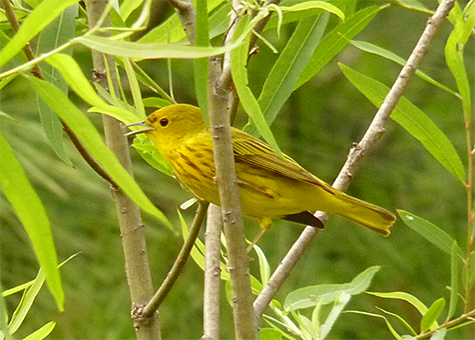
A variety of flowering plant species come into bloom and out of bloom almost daily. I happened to notice that the strawberry bush (Euonymus americanus), or bursting hearts, along the Dino Trail is in bloom. The flowers are not particularly showy and easily overlooked. It’s the fall when this plant gets it due. That’s when it shows off its pink seed pods and bright red seeds within.
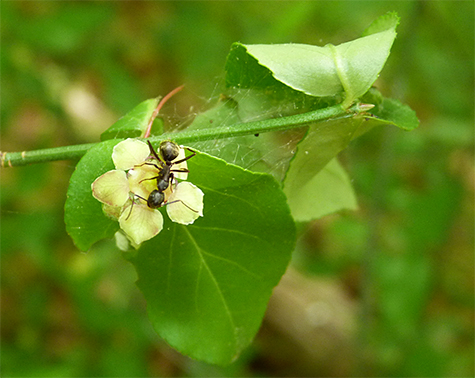
If, after having stopped at the Main Black Bear Overlook In Explore the Wild here at the Museum, you pause and look over the rail of the boardwalk, you may see tadpoles in the water, bullfrog tadpoles. Some are quite large. Many seem to be clinging to the fallen branches that lie in the water there.
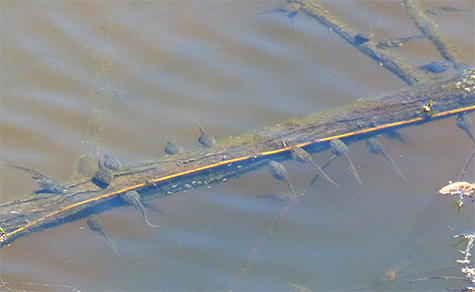
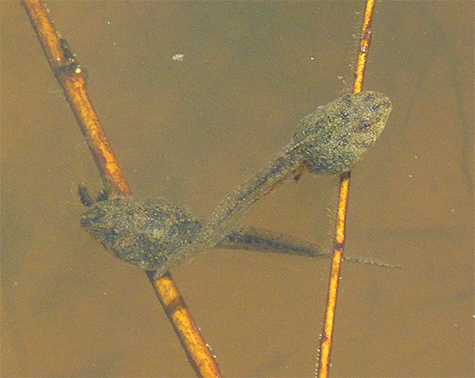
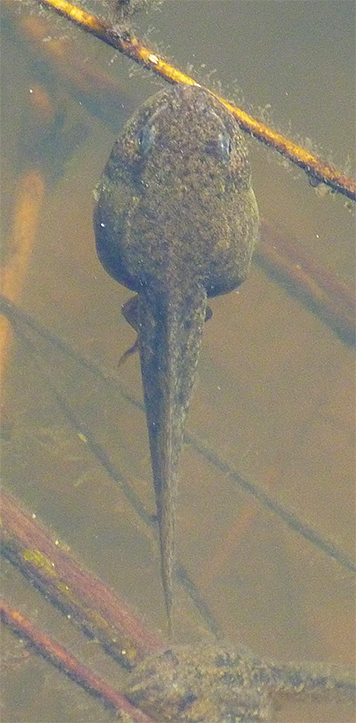
While you’re standing at the rail wondering at the tadpoles, you’ll probably see little, dark, elongated specks near the water’s surface. The specks are fish. Within the past few weeks, many thousands of tiny fish have hatched. They are golden shiner fry.
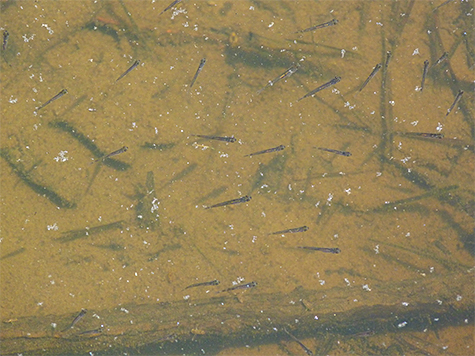
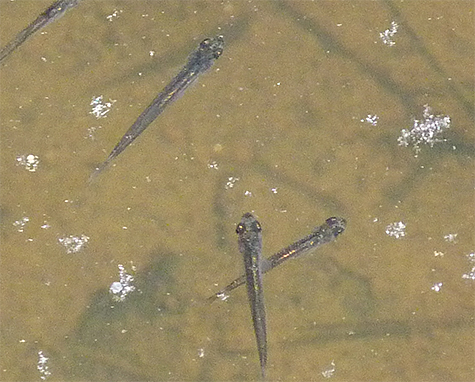
Turles, as you may already know, are out basking in numbers. The bright spring sunshine gets them out onto the rocks and logs of the Wetlands. Some people claim that snapping turtles don’t bask. I’ve seen them do so here at the Museum often enough to claim it’s a fairly common behavior, at least in the spring.
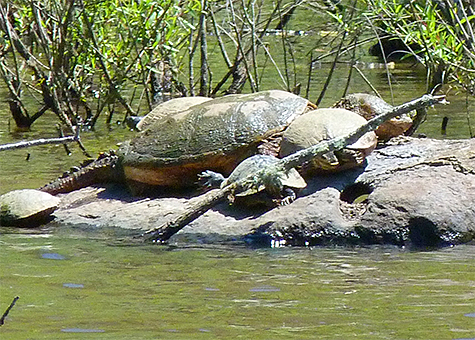
I’ve been keeping an eye out for a particular yellow-bellied slider since the beginning of March. She is one of the first sliders that I see basking each year. She is also one of the largest, if not the largest, sliders in our Wetlands. She is unmistakable in that she has a large chunk of her carapace missing on her left side. I hadn’t seen her yet this season and thought she may have expired. I saw her yesterday (4/28).
Chip, as she is known around here, was balancing on a rock with room for one turtle, just barely.
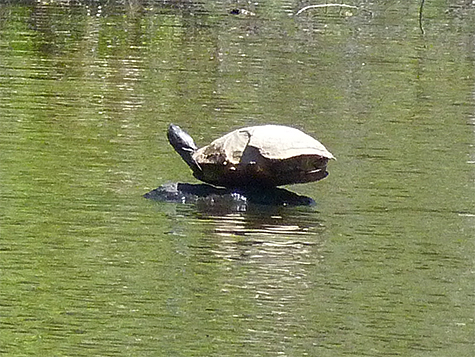
Glad you’re still with us, Chip!
yea chip!!!